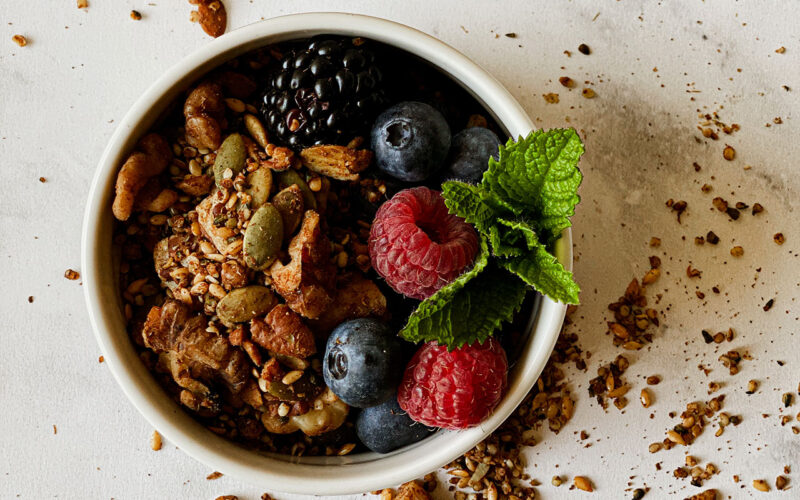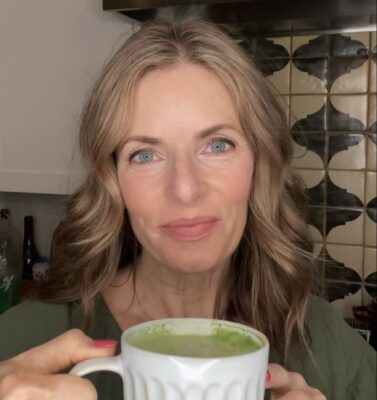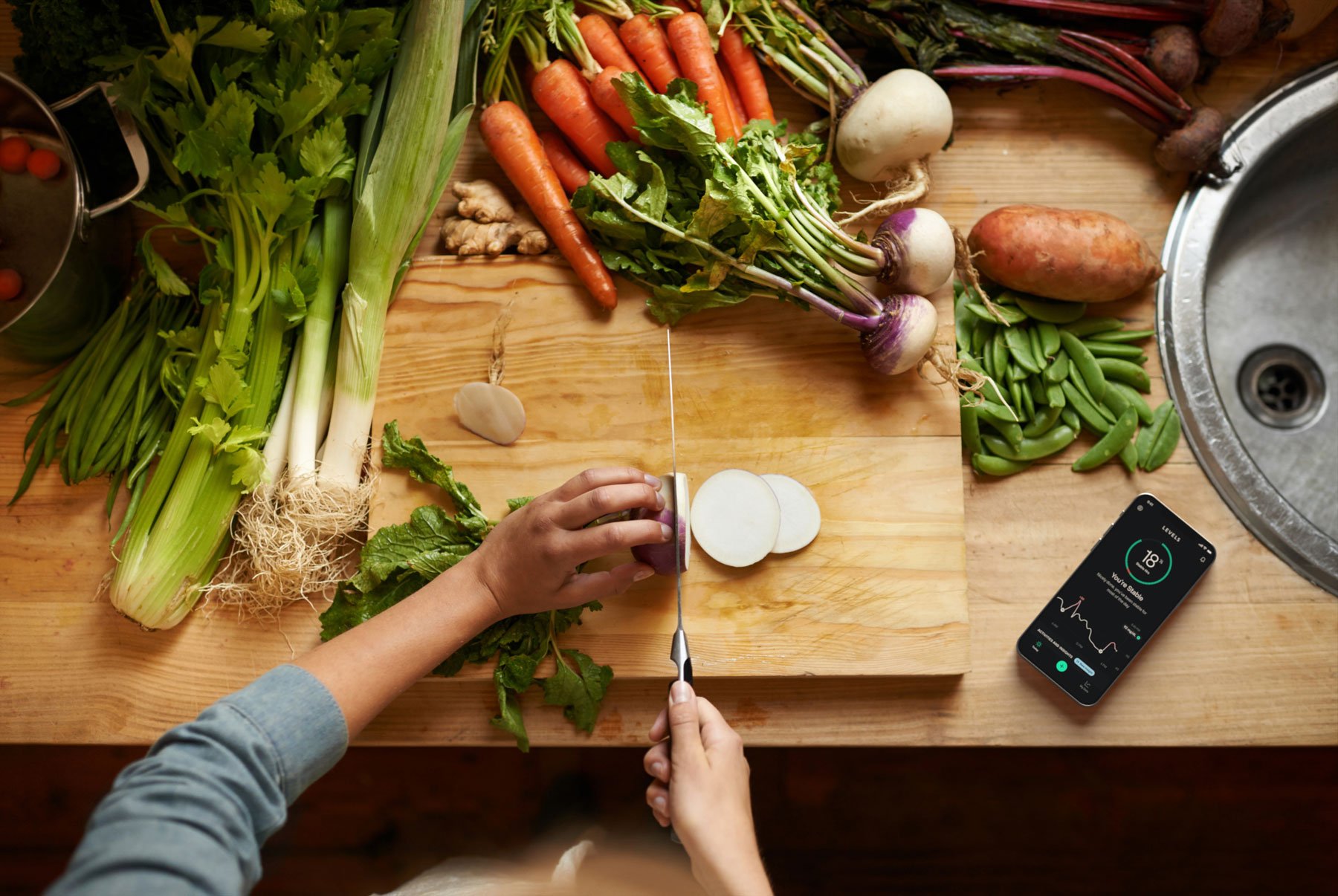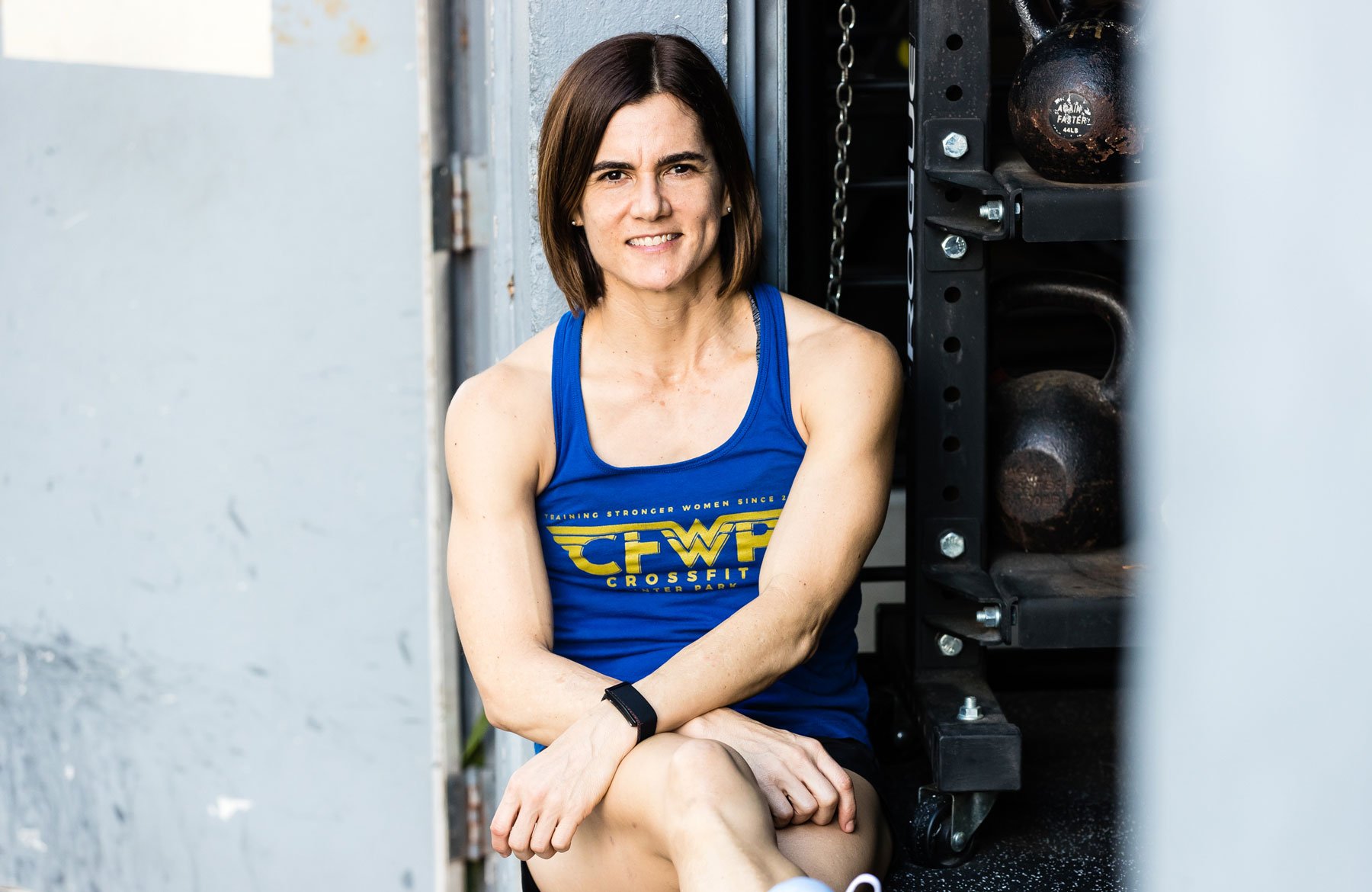Member Profile
Who: Beth Bollinger
Where: San Francisco Bay area
Time with Levels: Two years
Most Useful Takeaway: You can enjoy the occasional dessert and still maintain a healthy glucose response—as long as you make it rich in fat, fiber, and protein.
 What is your health background?
What is your health background?
I grew up eating the Standard American Diet. When I was 23, I started having chronic chest pain almost daily. After many tests and doctor’s appointments, no one could figure out what was going on with me. I lived with this for 12 years until I was finally diagnosed with mitral valve prolapse syndrome, a type of heart valve defect. The condition causes chest pain for some people.
After my diagnosis at age 35, I did a deep dive into the condition and what I could do about it. I read about three things that might be helpful: cutting out sugar, increasing hydration, and taking magnesium.
I did all three of those things. I cut refined sugar out of my diet completely and I started experimenting with cooking with maple syrup or a bit of honey occasionally to satisfy that desire for sweets. That was the start of my experimentation in the kitchen.
I don’t have chest pain anymore, and I haven’t for 21 years.
What made you start creating recipes in the first place?
Around the same time as I was starting to create recipes for myself, my daughter started having chronic stomach aches. As a child, she had multiple ear infections and was prescribed antibiotics constantly throughout her childhood. By the time she was six years old, she had gut dysbiosis. We’d go to specialists who recommended she increase her grain intake. We followed that advice, and my entire family all gained weight and got sicker. This was before I studied integrative health.
So, we cut grain out of our diet. But there were things, like desserts, that my family missed, so I started experimenting with alternative ingredients. I’d look up a healthy recipe online, and there was always a pretty photo to go along with it—but it would taste terrible. My family are tough critics, and it took a lot of trial and error to come up with a group of recipes they liked. At this point, we were eating a somewhat paleo diet.
I was also managing my husband’s medical practice. He is an orthopedic surgeon. Around that time, I started studying integrative health. I saw many of his patients who needed to lose weight or get healthier, and I began sharing my recipes with them, to good results. That’s when I got really deep into food and how food can create wellness.
What made you want to put a CGM on your arm?
I originally created my website, Nest Wellness, to share recipes with my husband’s patients. From there, I heard a podcast from Dr. Mark Hyman, who talked about using CGM. At that point, I really wanted to try wearing one to see how my body would react to the foods I was eating. I have been wearing mine for almost two years.
Learn more:
What interesting things did you learn while wearing the CGM?
Soon after putting on my CGM, I tried the Oatmeal Challenge [where Levels members tried oatmeal and an alternative to see how their blood sugar reacted]. Wow. Up to that point, I wasn’t eating grain at all. Oatmeal skyrocketed my blood sugar. And, my peak lasted for 2.5 hours. Even worse: I had chest pain. That’s what made the connection for me that grain is really just sugar. Besides my blood sugar reaction, experiencing that symptom of my heart valve condition really drove home the point that I needed to stay away from grains. Many people don’t respond well to oatmeal. For a better oatmeal alternative, I’ll eat Chocolate Peanut Butter No Oats, made with hemp hearts, chia and flax seeds, cacao powder, peanut butter, and coconut yogurt.
I was most disappointed in my response to popcorn. I enjoy it and occasionally still have it. If I eat it with nuts, my response isn’t terrible.
What makes a glucose-friendly recipe?
It’s the combination of fat, fiber, and protein. You can see this really at play with desserts. Sweets need a certain amount of protein or fiber to promote a good glucose response.
That’s one thing people have been really excited about: They can have the occasional dessert and still maintain a level glucose response. I’ve gotten really great feedback on my Dark Chocolate Brownies and Chocolate Mug Cake from members.
I test all of my recipes on myself and show how my body’s glucose levels respond. Especially in regards to treats, people always ask if I eat them by themselves. The answer is yes, always. To get that response for you, I ate the food by itself and showed you what happened. Of course, everyone’s response is individual, so I encourage people to try what works for them and make tweaks as needed.
What are some meals that consistently give you good blood sugar responses?
All of my recipes are made from whole foods, and contain no gluten, cow dairy, or refined sugar. I focus on vegetables, fruits, healthy fats, nuts and seeds, and responsibly raised meat and fish.
For breakfast, I like my No Oats, Homemade Grain-Free Granola, or eggs baked with cottage cheese (to increase the protein).
For lunch, I make sure my meal has 30 grams of protein and a wide variety of plants. (One trick I like is to count plants, which include veggies, nuts, seeds, herbs, and spices, to ensure I have a variety in each meal.) My lunch might be a combination of greens, broccoli sprouts, nuts, sauerkraut, and salmon or mackerel.
At dinner, I’m feeding a full household, but I stick to a formula of protein and at least three different vegetables. Asparagus, artichokes, and cauliflower are my top three favorites. For the protein, I’ll choose between wild-caught fish and seafood, regeneratively raised beef, or lamb, pork, chicken, or eggs.
Being a content creator for Levels encompasses my passion for wellness and my creative side. The ability to combine my interests makes me really grateful that I can do this as a career.
For more recipes from Beth, check out the Getting to the Green Recipe Library or her website Nest Wellness.











